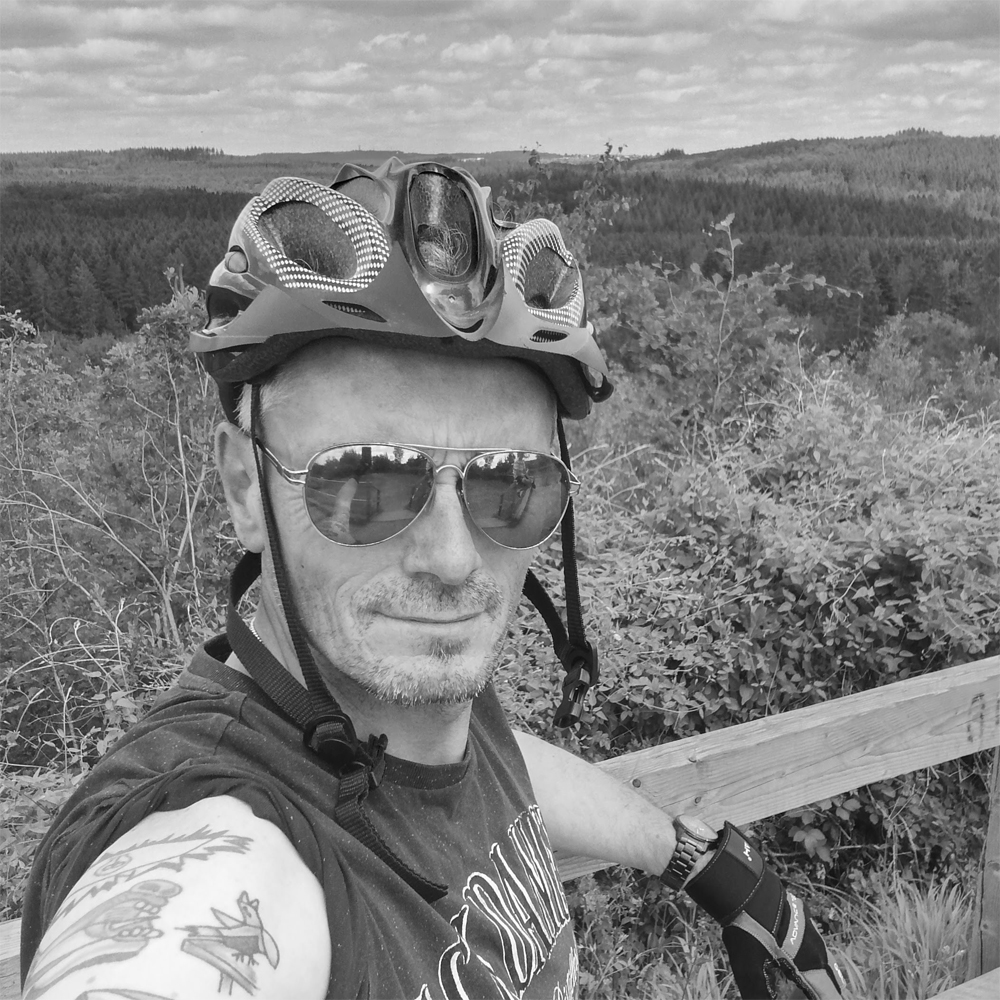“I probably should’ve trained more” – how top climbers Alex Honnold and Tommy Caldwell prepared for The Devil’s Climb
How two outdoor legends got in shape to cycle, sail and climb to a remote Alaskan summit for The Devil’s Climb documentary
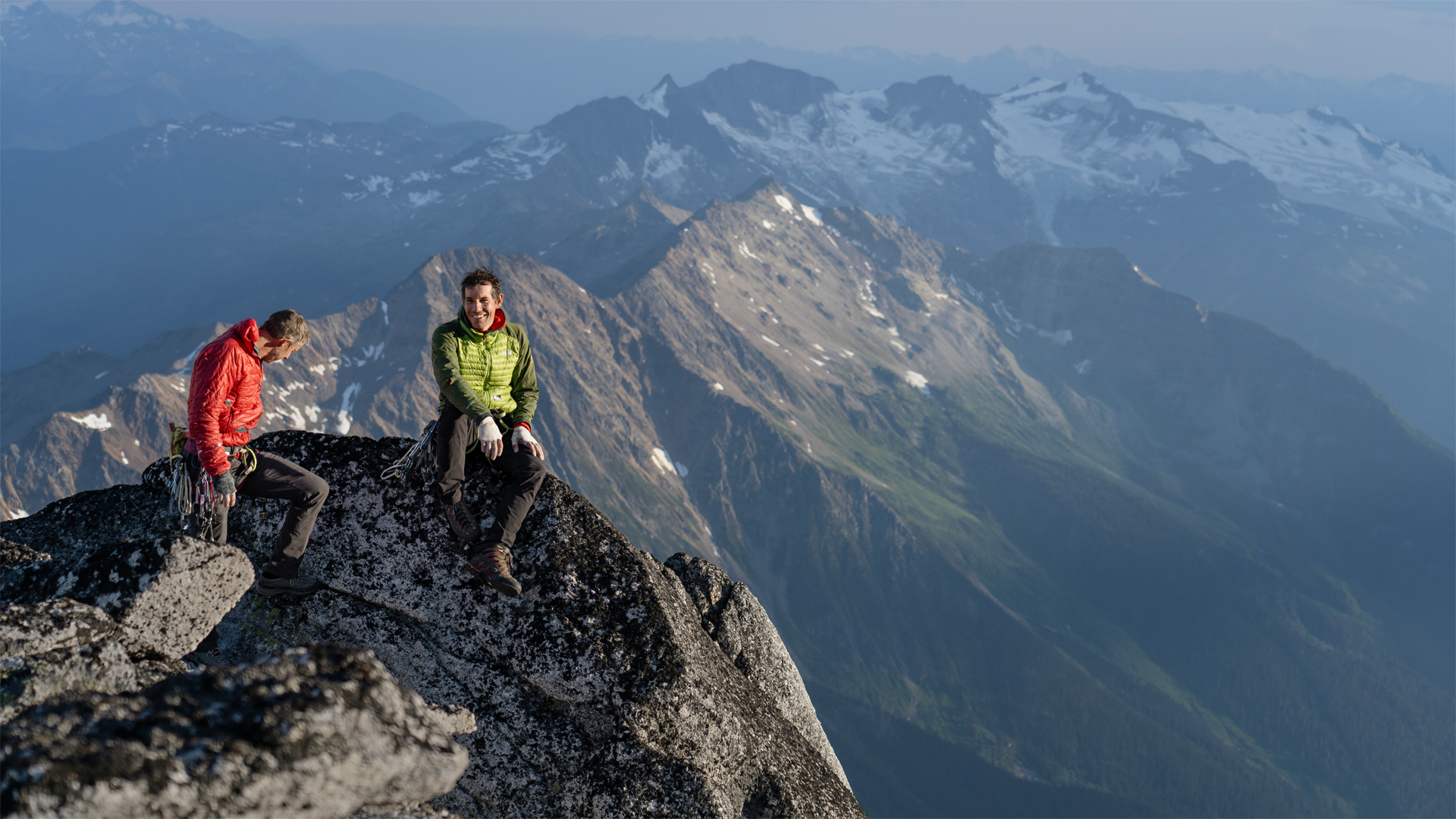
The Devil’s Climb follows renowned rock climbers Alex Honnold and Tommy Caldwell on their audacious attempt to summit the notorious Devil’s Thumb, a perilous 9,000-foot (2,760m) peak in the Alaskan wilderness. This expedition, spanning 2,600 miles by bike, sailboat and on foot, tests the climbers’ physical and emotional limits.
For Tommy, it marks a critical comeback after a serious Achilles injury, while for Alex it represents one of the most thrilling adventures of his life. These two long-time friends and climbing partners aim to make history by completing the first-ever single-day traverse of all five peaks of the Devil’s Thumb massif. Directed by climber Renan Ozturk, the documentary showcases their shared determination, skill and deep bond as they pushed themselves to the edge.
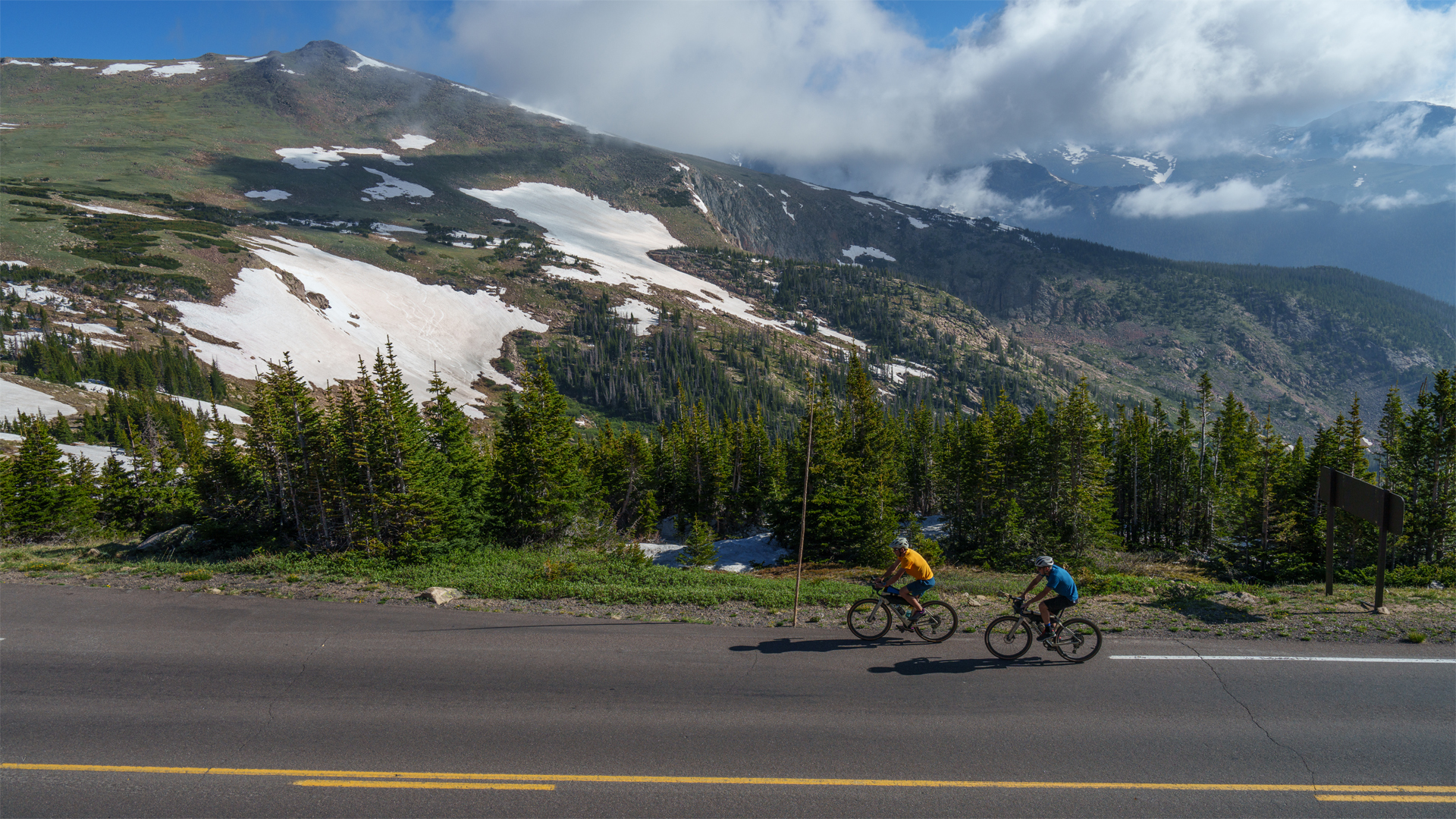
Climbing the Devil’s Thumb was such a massive challenge. Can you tell us how you prepared for such an expedition, both physically and nutritionally?
Alex Honnold: In terms of nutrition, we basically ate anything and everything we could get our hands on. As we traveled through towns, we ate at diners and stopped wherever we could to fuel up. It was like constantly throwing coal on the fire because we were cycling for eight hours a day. So yeah, we were eating a lot – probably more than usual just to keep our energy up. We weren’t too stressed about specific diets, just about eating enough.
As for physical preparation, it was a bit different for Tommy and me. Tommy was coming back from a serious Achilles injury, so that affected his training. For me, this expedition was an extension of my usual climbing life. It wasn’t so much something I trained specifically for because I felt like the climbing aspect was within the scope of what I do in a normal month or two. I’ll admit, I probably should’ve trained more for the cycling part, though – I wasn’t in cycling shape at all. But the actual climbing? That was normal, though definitely more adventurous and in cooler locations!
Tommy Caldwell: Yeah, that’s about right. For me, the climbing wasn’t as hard as what we typically do, although it was definitely dangerous. But technically speaking, the rock climbing wasn’t too challenging, especially compared to some of the harder things Alex and I have done in the past. It was actually perfect for where I was physically. Because of my Achilles injury, I hadn’t climbed much in the past two years, so I wasn’t in great climbing shape when we started the trip.
I did spend more time training for the cycling than Alex did because that’s what I could do. With the Achilles injury limiting my climbing, I leaned into the cycling more in preparation for the trip. So, the physical aspect was manageable, but it was definitely a journey.
Advnture Newsletter
All the latest inspiration, tips and guides to help you plan your next Advnture!
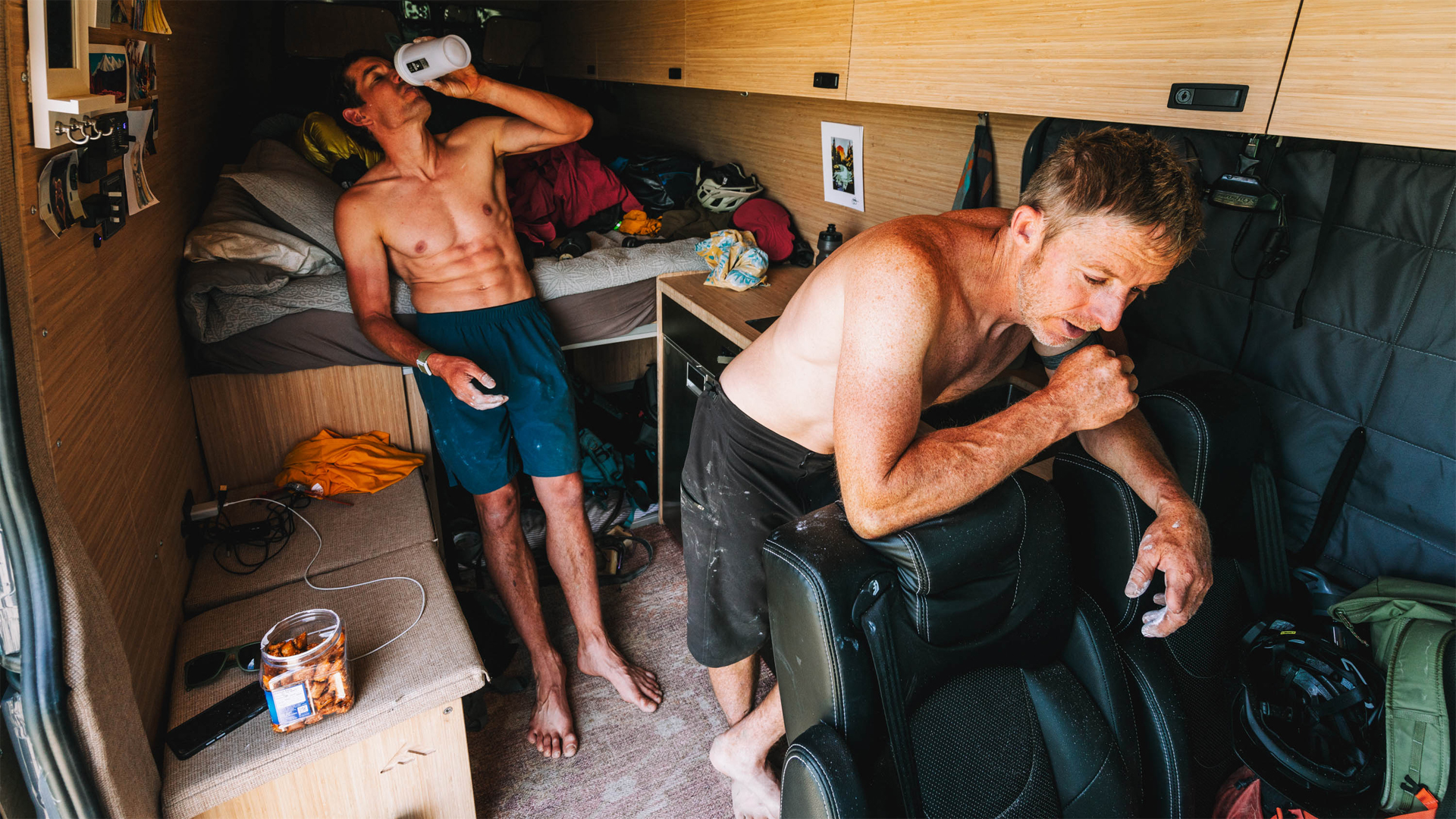
Speaking of the cycling, that part of the trip looked brutal, especially with the rain and big trucks flying by. What was that like?
Alex Honnold: Yeah, honestly, the cycling wasn’t as fun as the climbing. I had hoped to prepare more for the cycling, but life kind of got in the way. Right before we started, my daughter got sick, and then my wife and I both got sick, so I was dealing with all that. I had planned to do some bigger training rides, but those didn’t happen, so I showed up at the start still not feeling 100%. In retrospect, I should’ve been better prepared for the cycling. I mean, the roads weren’t great, and the weather wasn’t helping. There were a lot of moments where I thought, “This isn’t fun at all.” But you just adapt and push through.
Tommy Caldwell: For me, the cycling was an important part of the adventure. I think for Alex, it was more of a necessary annoyance to get to the climbing, but for me, it added to the magnitude of the trip. If we had just flown to the Devil’s Thumb and climbed it, the whole thing would’ve taken about a week. That didn’t feel big enough for me. I wanted something that felt epic, something way bigger. So we decided to cycle, sail, and hike into the mountain. We could’ve taken a helicopter straight to the base, but that wouldn’t have made the climb feel like the grand adventure I envisioned.
The cycling – and everything leading up to the climb – was part of expanding what’s possible in these kinds of expeditions. I loved that we made the journey into something massive.
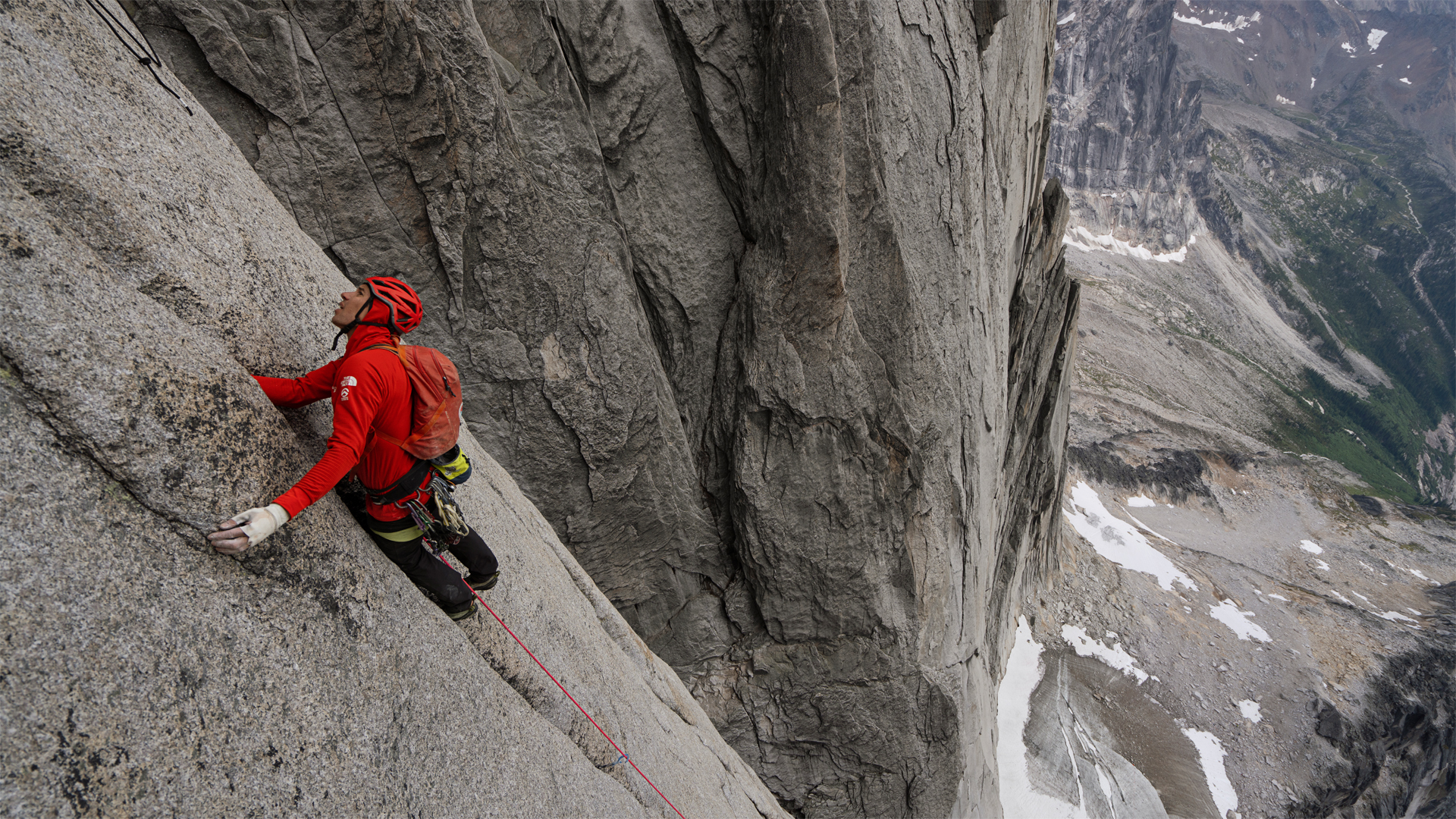
Before tackling the Devil’s Thumb, you did a major preparation climb at the Bugaboos, an alpine paradise in British Columbia that combines Yosemite’s rock quality with glacier features. How did that help the preparation?
Alex Honnold: The Bugaboos were a perfect training ground for Alaska. It has glaciers, moraines, and rocky terrain – similar to what we’d face on the Devil’s Thumb, but on a smaller scale. Alaska’s peaks and glaciers are massive, but the Bugaboos allowed us to brush up on skills like glacier traversing and walking on snow without the same level of intensity. It gave us a good chance to practice before taking on the larger, more dangerous mountains in Alaska.
I detected a sense of relief after completing that training climb, especially for you, Tommy. I guess it marked your return to expedition mode and proved your Achilles was holding up. Would you say that's accurate?
Tommy Caldwell: Yeah, that’s totally fair. It felt like everything was coming together. You know, when you plan these expeditions, there’s always this uncertainty – like, “Is this too ambitious? Are we going to make it?” So, when we finished a big climb like the Bugaboos, it was definitely a moment of relief.
You guys made it look intense! At one point, I noticed you were eating breakfast, while a rockfall could be heard crashing down in the distance. What were you eating there?
Alex Honnold: Oh yeah, that was probably freeze-dried oatmeal or something similar. A lot of the time we were eating typical backcountry food. You know, stuff that’s easy to carry and prepare, like freeze-dried meals with oats and dried fruit. It’s basic, but it does the job when you’re in remote areas.
Tommy Caldwell: Yeah, we had a fair amount of those freeze-dried meals. You get used to them. It’s just part of the experience, especially when you’re far from any other food sources.
How did the experience of traveling such a long distance on bikes, boats, and foot impact the final climb itself? Did it make the summit feel more meaningful?
Alex Honnold: Definitely. I think any summit becomes more meaningful when you’ve put in a lot of effort to get there. The whole expedition – cycling, sailing, hiking – it made the actual climbing more significant. By the time we reached the base of the Devil’s Thumb, we were already deep into this adventure, mentally and physically. That made getting to the summit feel a lot more rewarding.
Tommy Caldwell: Yeah, exactly. The journey added to the whole experience. Climbing the Devil’s Thumb on its own would’ve been a great adventure, but when you add the lead-up – cycling through rain, dodging trucks, sailing the inside passage, hiking through forests – becomes an epic journey. It wasn’t just about reaching the summit; it was about the entire process of getting there. The effort we put into the approach made the climb itself feel much more significant.
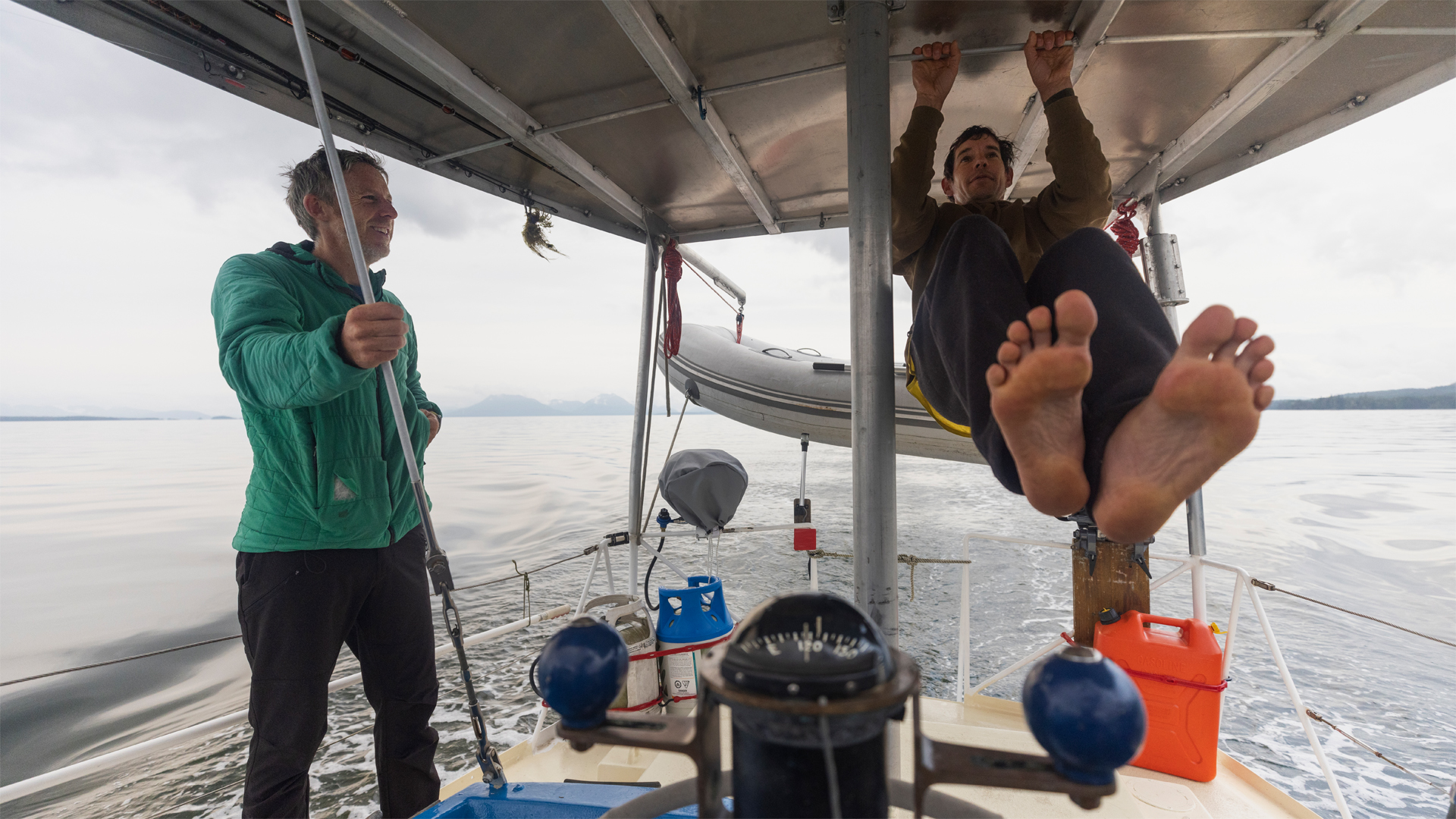
The film captures not only the physical challenges but also the emotional bond between the two of you. How did this shared history and friendship impact the way you approached the climb?
Alex Honnold: Tommy and I have a long history of climbing together, so we trust each other completely. That definitely impacted how we approached the expedition. We know each other’s strengths and weaknesses, and we can rely on each other in ways that you can’t always with other climbing partners. There’s a deep level of trust, and that makes everything a bit smoother. We don’t have to communicate everything because we just get it.
Tommy Caldwell: Exactly. That trust allows us to focus on the task at hand without worrying about all the little things. It’s an unspoken understanding that comes from years of climbing together. On a big expedition like this, having that level of trust makes all the difference. It wasn’t just about summiting the Devil’s Thumb – it was about doing it together, pushing ourselves, and supporting each other through the ups and downs.
National Geographic’s The Devil's Climb is available to watch now on Disney+ and Hulu in the US. UK and Australia release dates are TBC.
Rob Kemp is a Dorset-based trail runner and off-road cyclist. He's written on the subject of health and fitness for over 25 years across a range of publications and websites. A former contributor to Trail Running and Outdoor Fitness magazines, his work now regularly features in The Telegraph and Cycling Weekly magazine. These days he's easing off from marathon running and devoting more time to hiking in Wales and Scotland or falling off of his bike in scenic wilds of south-west England.

